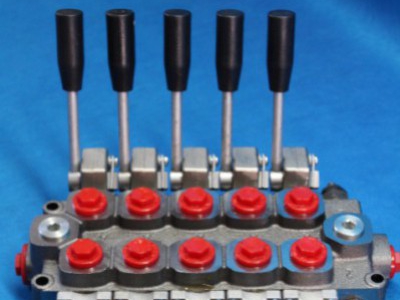Proportioning valve is a valve that rests on a tripod to provide reduced pressure to the output line.
When the spring load exerts a reducing force, thereby reducing the outlet pressure. Proportioning valves are often used in cars to reduce brake fluid pressure to the rear brakes. When the brake pedal is depressed, it pushes the first (main piston) through the connection. The pressure increases in the cylinder and lines when the brake pedal is pressed further. The pressure between the main and secondary piston forces the secondary piston to compress the fluid in its circumference. When the brakes are working properly, the pressure will be the same in both circuits.
Proportional valve is required for vehicles equipped with disc brakes on the front wheels and drum brakes on the rear wheels. Brake discs are usually in contact with the disc, while brake drum pads usually do not touch the drum. If the pressure was not proportional, the disc brakes would clamp before the drum touches when you press the brake pedal.
Proportional valve compensates for this by allowing the drum brakes to be engaged first in front of the brake disc. Proportioning valve does not allow any pressure to the disc brakes until a predetermined pressure is reached. The predetermined pressure is low compared to the maximum pressure in the brake system, which allows the drum brakes to be applied before the disc brakes are actuated. The inclusion of rear brakes provides the control and stability needed to stop the vehicle's safety.
The proportional valve reduces pressure to the rear brakes. Regardless of the type of vehicle brakes, the rear brakes require less pressure than the front brakes.
If the same braking force is applied to all four wheels when stopping, the rear wheels will lock in front of the front wheels. The proportional valve only passes a part of the pressure to the rear wheels, preventing the rear wheel from locking.
In such equipped vehicles with the proportioning valve, the proportionality ratio is obtained by combining the selection of the piston diameter of the master cylinder and adjusting the mechanical reaction system connecting the two main cylinders. Also known as a pressure strap, the geometry of the connection determines the distribution of the front and rear forces from the brake pedal assembly. An important advantage of this arrangement is that the differential rod can be designed in such a way that the driver can regulate the ratio of front-to-back proportionality with simultaneous speed.
Up to a certain pressure, these proportioning valves ensure an even pressure of both the front and rear brake. However, once the desired pressure point has been reached (600 psi for example), the pressure in the rear brake continues to increase, but at a lower speed (or inclination) than the front brake pressure.
Choosing the right adjustable proportional valve for the vehicle involves not only selecting the right point where the slope limitation starts (node), but also choosing the correct speed at which the pressure in the rear brake line is built after this point (slope). Almost every adjustable dispensing valve currently available on the market has an adjustable knee point (the point at which pressure in the rear brake line begins to control), but a constant slope (the speed at which it is built off the knee point).


.JPG)
.JPG)



.JPG)
.JPG)